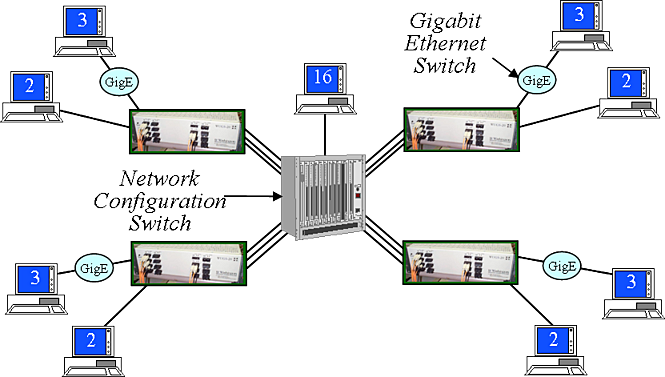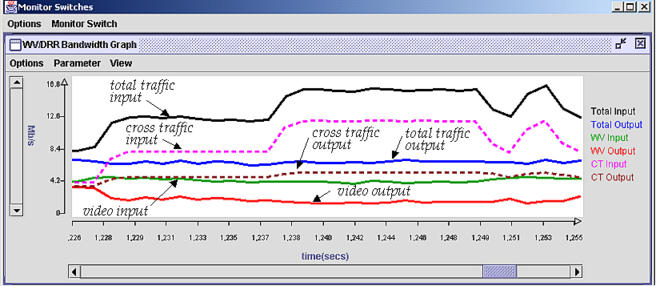| Tutorial >> Overview |
|

The Open Network Laboratory consists of four experimental gigabit routers called Network Service Processors (NSPs) plus rack-mounted PCs that serve as end systems and NSP control processors. Some PCs are directly attached to specific NSPs while others are dynamically connected to NSPs on a demand basis. Each NSP has eight ports. In a standard configuration, each NSP port contains a programmable hardware (FPGA) packet processor and an embedded, general-purpose processor which can assist the packet processor.
The Network Configuration Switch is used to implement virtual network topologies linking the routers to one another and to hosts. When multiple experimental networks are present in the testbed, they operate independently. The configuration switch has a number of unused ports that can be used to deliver additional features, such as programmable link delays and high-rate traffic generators.

Users interact with the testbed using
the Remote Laboratory Interface (RLI) which is a
standalone Java application.
In configuration mode, the RLI is used to request and configure
testbed components.
In monitoring mode, the RLI is used to display performance metrics
in real time.
| Tutorial >> Overview |
|